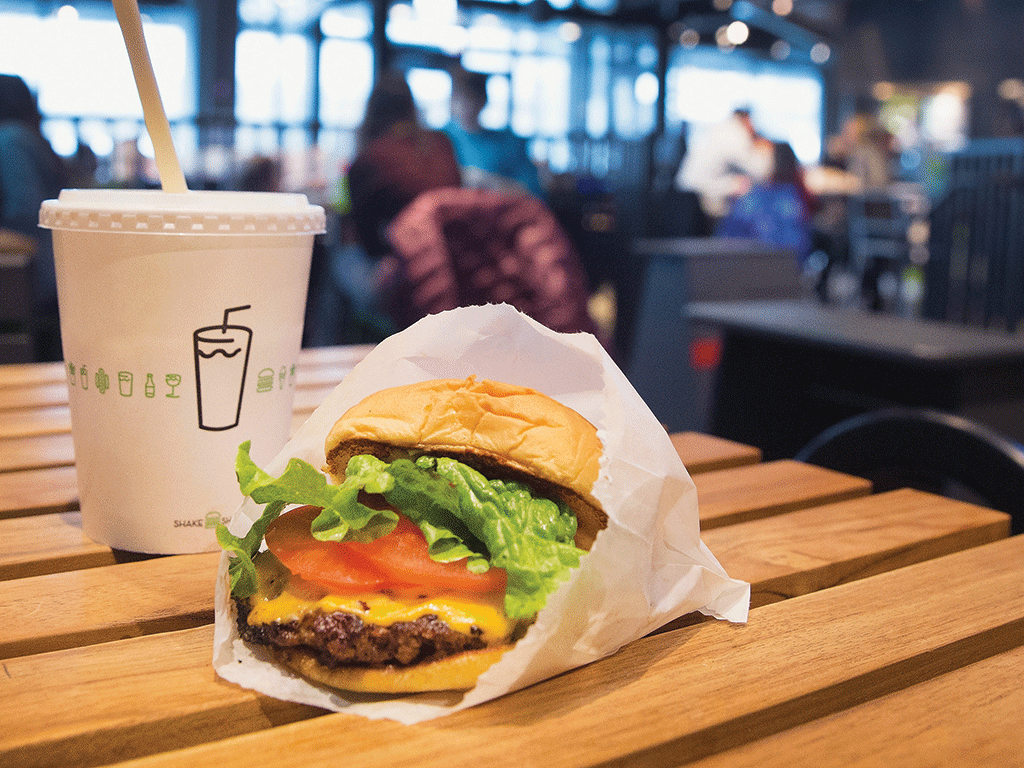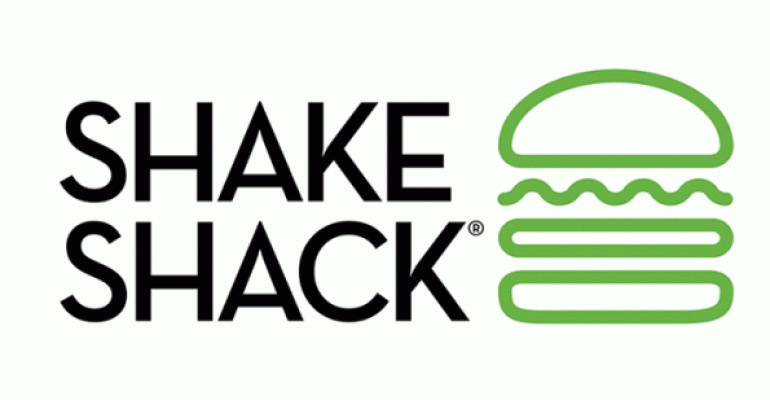Shake Shack Inc. on Thursday reported a 2.5-percent decline in same-store sales in the first three months of the year.
Blame free burgers.
Shake Shack’s burger giveaway in the first quarter ended March 29, aimed at driving use of its new mobile app, was part of the reason for the decline. The chain gave away nearly 90,000 free burgers, CEO Randy Garutti said during an earnings call Thursday.
“That’s $500,000 in burger sales not represented as revenue,” Garutti said.
Half of those sales took place at the 32 restaurants Shake Shack uses to calculate same-store sales, he said.
But weather was a bigger problem. In early March, same-store sales rose 2 percent, in line with expectations, Garutti said. But colder-than-average temperatures hurt traffic, and a winter storm led to multiple temporary closures.
More than half of the 32 units in Shake Shack’s same-store sales base are in the Northeast and were affected by the weather. That, plus a calendar shift, led to an 8-percent decline in same-store sales for the rest of March, Garutti said.
Another factor was the opening of four locations in New York.
Shake Shack’s 15 New York locations have average unit volumes of $7.5 million. The addition of four more last year likely hurt sales at existing locations. But the new locations themselves are expected to generate $7 million in average unit volumes.
“Are we a better company because of the new shacks? You bet,” Garutti said.
Executives said the company’s small base of restaurants in the same-store sales base leads to wide swings in results. Same-store sales have improved in the second quarter thus far, executives noted, which should help Shake Shack meet the flat same-store sales it expects.

Despite weak same-store sales in the quarter, executives remain bullish about the chain’s prospects, and especially new unit openings. Shake Shack is opening more locations this year than it expected — 23 to 24 locations, rather than the 22 to 23 units it had expected.
Shake Shack is opening more locations in part because newer restaurants are opening stronger. Units opened in 2016 have performed better than expected, Garutti said, and so have locations opened earlier this year.
Overall average unit volumes for the chain were about $5 million, the company said, and four-wall operating profit was 28.3 percent in the quarter, making it among the most profitable concepts among publicly traded chains.
Shake Shack operates 72 domestic locations. Washington, D.C., units average $4.3 million in unit volumes, while the 48 units outside New York and D.C. average $4.2 million. Operating profit at those locations is over 27 percent, Garutti said.
“Can Shake Shack be successful outside of New York? You bet,” he said.
Executives have high hopes for the mobile app introduced during the quarter. The app has been downloaded 300,000 times, and orders from the app represent 3 percent of sales, “a number we believe will continue to grow.” Shake Shack is working on an Android version of the app.
Average check for those transactions is “much higher” than it is when customers order at the counter, Garutti said. Still, the company is focused on managing service times when mobile orders come in, he said.
The orders “can be challenging at our busiest shacks,” Garutti said. “We want to make sure we’re really thinking a lot about throughput.”
Investors remain bullish on the chain. Shake Shack’s stock price took a dive in after-hours trading Thursday, after the sales report. But it rebounded on Friday after analysts upgraded the stock because of the company’s growth prospects.
John Zolidis, analyst with Buckingham Research Group, upgraded the stock to Buy on Friday. He noted that the company’s toughest comparison this year was in the first quarter — same-store sales increased 9.9 percent in the first quarter of 2016.
Shake Shack has now passed that test. New units open at “very robust volumes.”
“Over time, we are excited about the company’s growth opportunity,” Zolidis wrote.
Contact Jonathan Maze at [email protected]
Follow him on Twitter: @jonathanmaze





